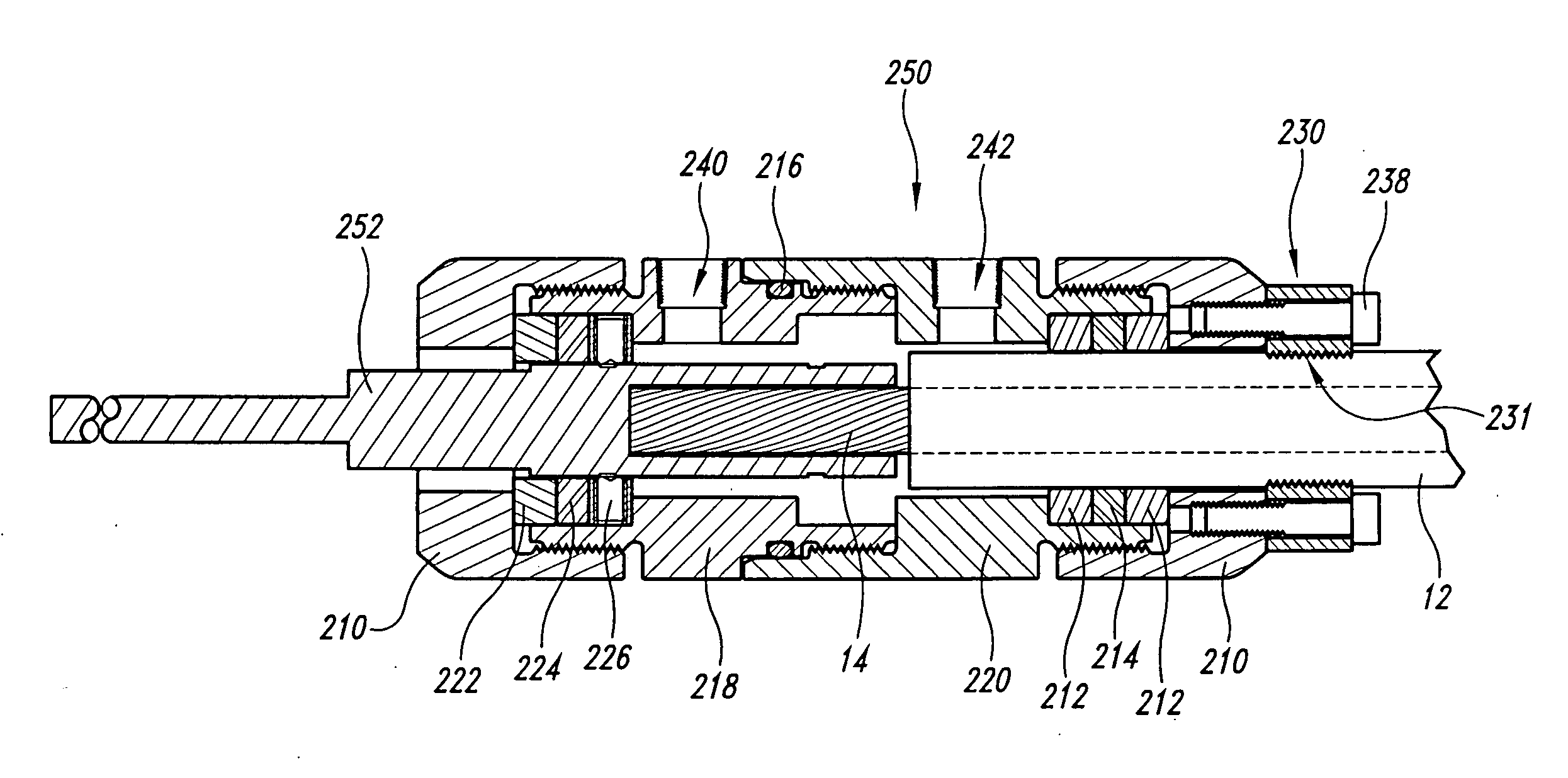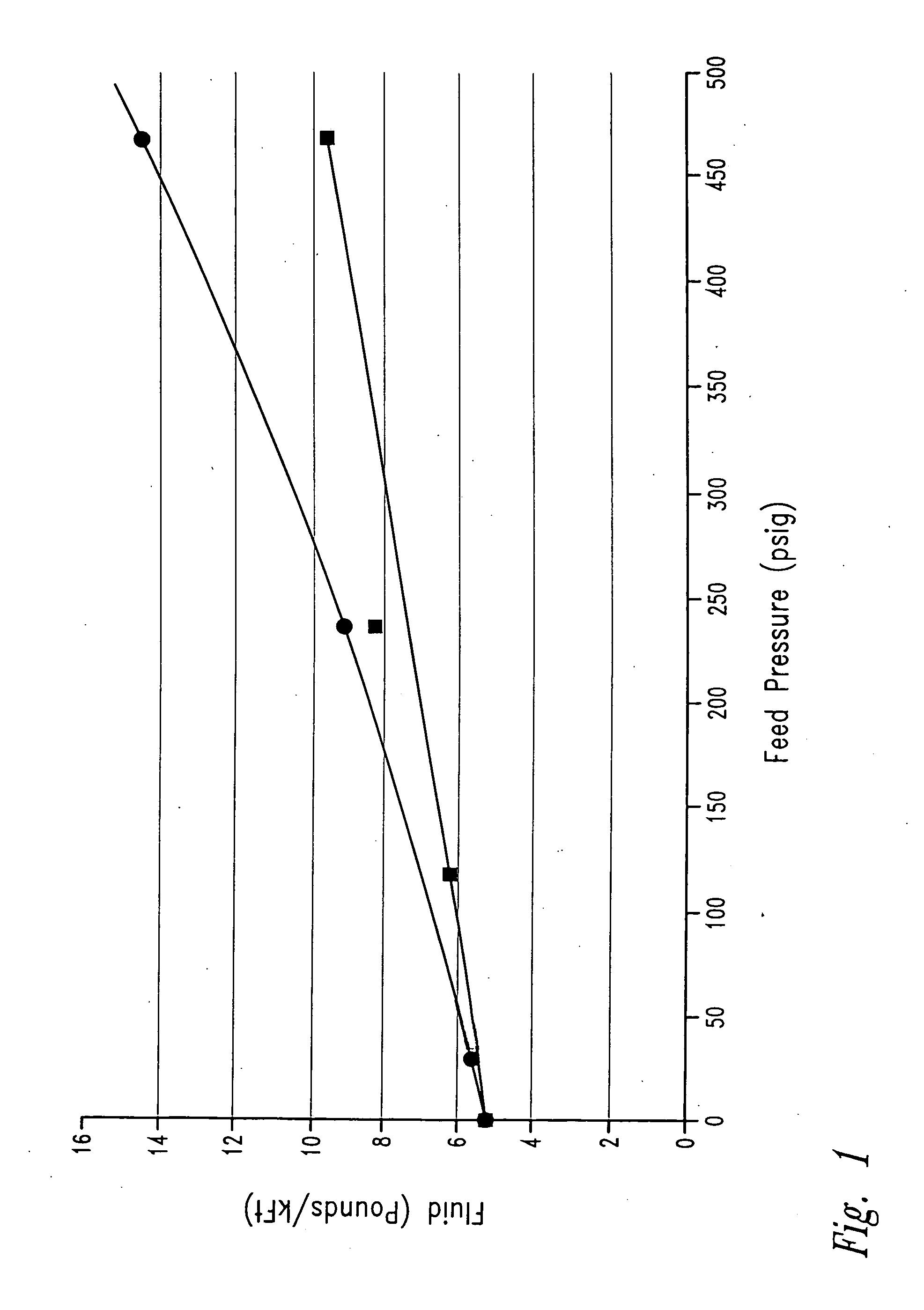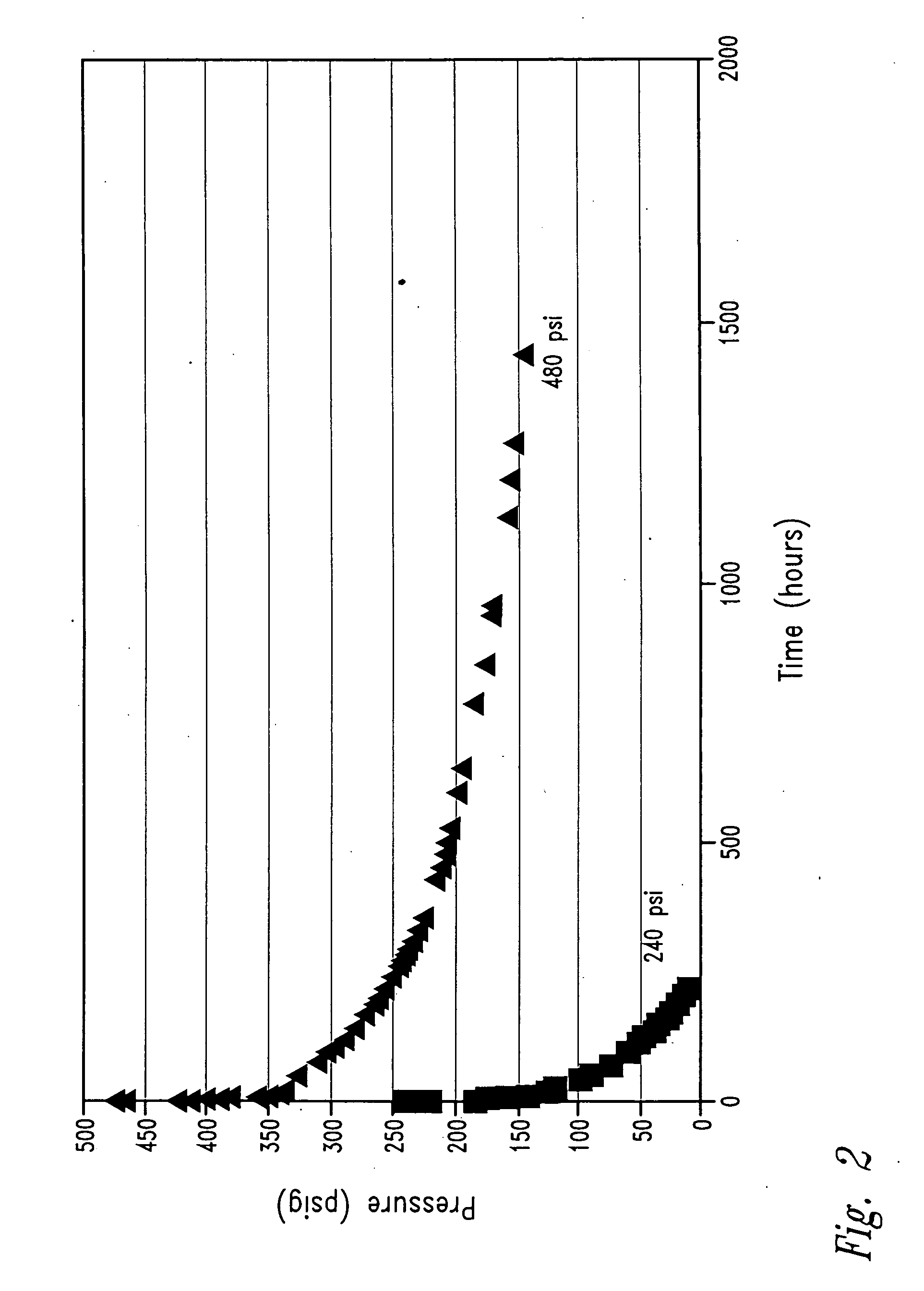Method for treating electrical cable at sustained elevated pressure
a technology of electrical power cables and dielectric strength, which is applied in the direction of insulating conductors/cables, cables, insulated conductors, etc., can solve the problems of reducing the service life of cables, premature breakdown, and not reaching the original anticipated longevity of 30 to 40 years
- Summary
- Abstract
- Description
- Claims
- Application Information
AI Technical Summary
Benefits of technology
Problems solved by technology
Method used
Image
Examples
Embodiment Construction
[0022]The instant method exploits the discovery that, when the interstitial void volume of a cable segment is filled with a dielectric property-enhancing fluid and the fluid confined therein at a high residual pressure, the volume of fluid actually introduced significantly exceeds the volume predicted from a rigorous calculation of the cable's expansion at the imposed pressure. The difference between the observed and calculated volume change increases with pressure and is believed to be due mainly to the accelerated adsorption of the fluid in the conductor shield as well as transport thereof through the conductor shield and insulation of the cable. Thus, with sufficient residual sustained pressure, it is possible to expand the insulation jacket of an in-service cable segment in a manner that is so slight as to not cause any mechanical damage to the cable or to induce any untoward electrical effects, yet large enough to significantly increase the volume of dielectric property-enhanci...
PUM
| Property | Measurement | Unit |
|---|---|---|
| maximum pressure | aaaaa | aaaaa |
| pressures | aaaaa | aaaaa |
| residual pressure | aaaaa | aaaaa |
Abstract
Description
Claims
Application Information
 Login to View More
Login to View More - R&D
- Intellectual Property
- Life Sciences
- Materials
- Tech Scout
- Unparalleled Data Quality
- Higher Quality Content
- 60% Fewer Hallucinations
Browse by: Latest US Patents, China's latest patents, Technical Efficacy Thesaurus, Application Domain, Technology Topic, Popular Technical Reports.
© 2025 PatSnap. All rights reserved.Legal|Privacy policy|Modern Slavery Act Transparency Statement|Sitemap|About US| Contact US: help@patsnap.com



